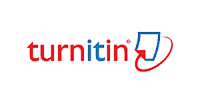Synergistic Effects of Honey and Herbal Bioactives in Cancer Suppression
Abstract
Natural bioactives from medicinal plants and honey possess remarkable antioxidant and anticancer properties. However, limited studies have evaluated their synergistic efficacy as combination formulations. This study aimed to develop and characterize a honey–herbal formulation with potential anticancer activity against human breast cancer cells (MDAMB) while ensuring minimal cytotoxicity toward non-cancerous mesenchymal stem cells (MSCs). The formulation was prepared by blending ethanolic herbal extract with pure natural honey in optimized ratios. Organoleptic characteristics were assessed by sensory evaluation. Antioxidant capacity was determined by the 2,2-diphenyl-1-picrylhydrazyl (DPPH) assay. Organoleptic analysis showed acceptable color, aroma, texture, and pH profiles. The honey exhibited strong antioxidant (IC₅₀ = 60 ± 0.7 ppm) compared with external honey and others sample. The formulation demonstrates potential as a functional nutraceutical or adjunctive natural therapy for breast cancer management, warranting further in vivo and molecular pathway investigations.
References
Hanahan D. Hallmarks of cancer: New dimensions. Cancer Discov. 2022;12(1):31-46. doi:10.1158/2159-8290.CD-21-1059
Sung H, Ferlay J, Siegel RL, et al. Global cancer statistics 2020: GLOBOCAN estimates of incidence and mortality worldwide for 36 cancers in 185 countries. CA Cancer J Clin. 2021;71(3):209-249. doi:10.3322/caac.21660
Bray F, Laversanne M, Weiderpass E, Soerjomataram I. The ever-increasing importance of cancer as a leading cause of premature death worldwide. Cancer. 2021;127(16):3029-3030. doi:10.1002/cncr.33587
Vasan N, Baselga J, Hyman DM. A view on drug resistance in cancer. Nature. 2019;575(7782):299-309. doi:10.1038/s41586-019-1730-1
Oun R, Moussa YE, Wheate NJ. The side effects of platinum-based chemotherapy drugs: A review for chemists. Dalton Trans. 2018;47(19):6645-6653. doi:10.1039/C8DT00838H
Holohan C, Van Schaeybroeck S, Longley DB, Johnston PG. Cancer drug resistance: An evolving paradigm. Nat Rev Cancer. 2013;13(10):714-726. doi:10.1038/nrc3599
Cragg GM, Pezzuto JM. Natural products as a vital source for the discovery of cancer chemotherapeutic and chemopreventive agents. Med Princ Pract. 2016;25(S2):41-59. doi:10.1159/000443404
Newman DJ, Cragg GM. Natural products as sources of new drugs over the nearly four decades from 1981 to 2019. J Nat Prod. 2020;83(3):770-803. doi:10.1021/acs.jnatprod.9b01285
Kumar N, Goel N, Kumar N. Phytochemicals in anticancer drug discovery: Progress and promise. Pharmacogn Rev. 2021;15(29):1-17. doi:10.4103/phrev.phrev_24_20
Choudhari AS, Mandave PC, Deshpande M, Ranjekar P, Prakash O. Phytochemicals in cancer treatment: From preclinical studies to clinical practice. Front Pharmacol. 2020;10:1614. doi:10.3389/fphar.2019.01614
Ahmed S, Sulaiman SA, Baig AA, et al. Honey as a source of natural antioxidants and therapeutic agents. Front Pharmacol. 2021;12:666. doi:10.3389/fphar.2021.666
Eteraf-Oskouei T, Najafi M. Traditional and modern uses of natural honey in human diseases: A review. Iran J Basic Med Sci. 2013;16(6):731-742.
Ahmed S, Othman NH. Honey as a potential natural anticancer agent: A review of its mechanisms. Evid Based Complement Alternat Med. 2013;2013:829070. doi:10.1155/2013/829070
Hassan MI, Mabrouk GM, Shehata HH, Aboelhussein MM. Antineoplastic effects of bee honey and propolis in human breast cancer: Mechanisms of action. Integr Cancer Ther. 2012;11(4):354-360. doi:10.1177/1534735411433209
Fauzi AN, Norazmi MN, Yaacob NS. Tualang honey induces apoptosis and disrupts the mitochondrial membrane potential of human breast and cervical cancer cell lines. Food Chem Toxicol. 2011;49(4):871-878. doi:10.1016/j.fct.2010.12.010
Al-Waili N, Salom K, Al-Ghamdi A, Ansari MJ. Antibiotic, antioxidant, and anticancer properties of honey: Mechanisms and potential of honey as an adjuvant in cancer therapy. Evid Based Complement Alternat Med. 2013;2013:827180. doi:10.1155/2013/827180
Khalil MI, Sulaiman SA, Boukraa L. Antioxidant properties of honey and its role in preventing health disorder. Open Nutraceuticals J. 2010;3(1):6-16.
Meo SA, Al-Asiri SA, Mahesar AL, Ansari MJ. Role of honey in modern medicine. Saudi J Biol Sci. 2017;24(5):975-978. doi:10.1016/j.sjbs.2016.12.010
Abubakar MB, Abdullah WZ, Sulaiman SA, Suen AB. A review of the anticancer properties of honey. Front Pharmacol. 2021;11:563. doi:10.3389/fphar.2020.00563
Blois MS. Antioxidant determinations by the use of a stable free radical. Nature. 1958;181(4617):1199-1200. doi:10.1038/1811199a0
Brand-Williams W, Cuvelier ME, Berset C. Use of a free radical method to evaluate antioxidant activity. LWT Food Sci Technol. 1995;28(1):25-30. doi:10.1016/S0023-6438(95)80008-5
El Sohaimy SA, Masry SHD, Shehata MG. Physicochemical characteristics of honey from different origins. Ann Agric Sci. 2015;60(2):279-287. doi:10.1016/j.aoas.2015.10.015
Alvarez-Suarez JM, Gasparrini M, Forbes-Hernández TY, Mazzoni L, Giampieri F. The composition and biological activity of honey: A focus on Manuka honey. Foods. 2018;7(5):41. doi:10.3390/foods7050041
El-Mahmoudy AB, Shukry M, Abdo W. Synergistic anticancer effects of honey and propolis against Ehrlich ascites carcinoma in mice. Biomed Pharmacother. 2020;132:110881. doi:10.1016/j.biopha.2020.110881
Copyright (c) 2025 International Journal of Cell and Biomedical Science

This work is licensed under a Creative Commons Attribution-NonCommercial-ShareAlike 4.0 International License.







